October 26, 2025
Upper Belvedere: Gustav Klimt’s The Kiss in Baroque Masterpiece
Architecture, Art, Culture, History
This page contains links through which we may earn a small commission should you decide to book a tour from our partner.
Top attractions:
About Upper Belvedere
The Upper Belvedere (Oberes Belvedere) is a Baroque palace in Vienna’s 3rd district, built between 1717 and 1723 by architect Johann Lukas von Hildebrandt for Prince Eugene of Savoy as a venue for state receptions and grand festivals. Today it houses the Belvedere Museum’s permanent collection spanning over nine centuries of Austrian art, including 24 paintings by Gustav Klimt—the world’s largest single collection.
The palace anchors a Baroque ensemble that includes the Lower Belvedere, formal French gardens, and cascading fountains stretching across the hillside between Rennweg and Landstraßer Gürtel. Visitors come primarily for Klimt’s iconic “The Kiss” (1908) and “Judith I” (1901), but the collection extends from medieval altarpieces through Biedermeier, Vienna Secession, and Austrian Expressionism to contemporary works.
The building itself—with its Sala Terrena, Marble Hall adorned with Carlo Carlone frescoes, and ceremonial Grand Staircase—remains one of Europe’s finest examples of late Baroque palace architecture, conceived not as a residence but as a showpiece for Prince Eugene’s military triumphs and diplomatic prestige.
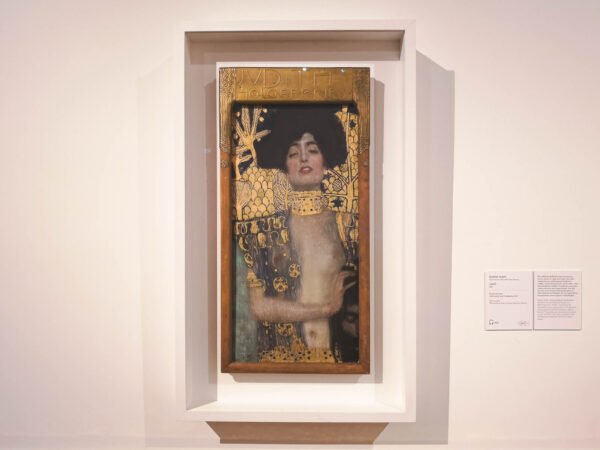
Gustav Klimt, Judith I, 1901. Photo by Alis Monte [CC BY-SA 4.0], via Connecting the Dots
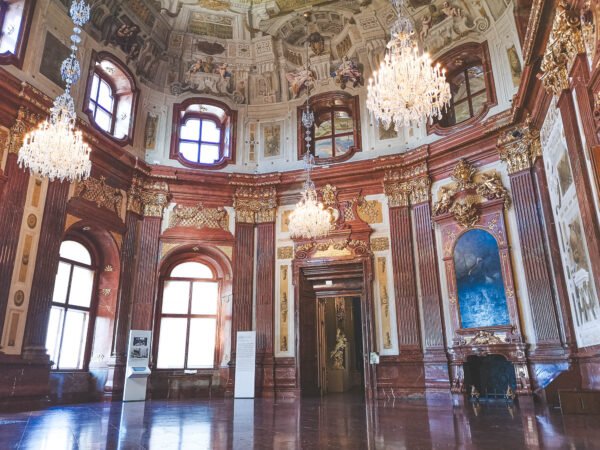
The Marble Hall. Photo by Alis Monte [CC BY-SA 4.0], via Connecting the Dots
Upper Belvedere Details
- Location: Landstraße (3rd district)
- Region: Vienna, Austria
- Address: Prinz Eugen-Straße 27, 1030
- Entrance: Main Entrance (Prinz Eugen-Straße)
- Created: 1717–1723 (18th century)
- Architectural Style: Baroque
- Entrance fee: €19.50 (Upper Belvedere standard; combo day tickets available)
- Tickets: Available online and at the box office (advance booking recommended to skip lines, especially 11:00–14:00)
- Opening hours: Daily 9:00–18:00 (as of October 2025)
- Phone: +43 1 795 57-0
- Transport: Tram D (Schloss Belvedere); S-Bahn & Tram 18, O (Quartier Belvedere); U1 Südtiroler Platz/Hauptbahnhof (15-minute walk)
- Accessibility: Step-free access via lift; wheelchairs available; accessible restrooms (note: the garden path between Upper and Lower Belvedere is not barrier-free)
Location
Current Exhibitions
- Picture this! – The Belvedere Collection from Cranach to Lassnig (Permanent Collection)
History & Development
Prince Eugene of Savoy—Habsburg general, diplomat, and patron—commissioned the Upper Belvedere in 1717 as the ceremonial centerpiece of his suburban estate. Johann Lukas von Hildebrandt designed it not as living quarters but as a festival hall and gallery for the prince’s art collection and library. Completed in 1723, it stood at the top of a terraced garden, visually dominating the approach from the city.
After Prince Eugene’s death in 1736, the complex passed to the Habsburgs. Empress Maria Theresa acquired it in 1752 and opened parts to the public as an Imperial Picture Gallery—one of the world’s first public museums. During the Congress of Vienna (1814–1815), Archduke Ferdinand used the palace to display imperial collections; in 1896 it became home to the Modern Gallery, showcasing contemporary Austrian art.
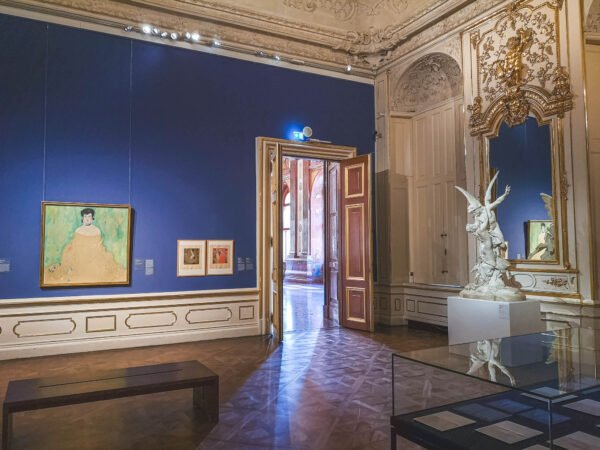
Gustav Klimt, Amalie Zuckerkandl, 1917/18 (unfinished). Photo by Alis Monte [CC BY-SA 4.0], via Connecting the Dots
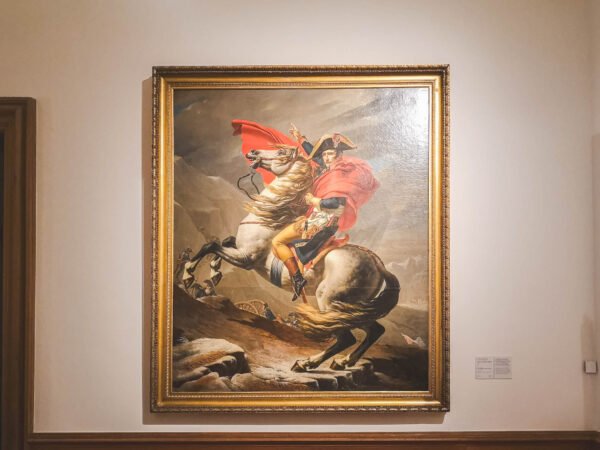
Jacques-Louis David, Napoleon Crossing the Alps, 1801. Photo by Alis Monte [CC BY-SA 4.0], via Connecting the Dots
The 20th century brought transformation and trauma. After World War I, the palace became state property; the Austrian State Treaty ending Allied occupation was signed in the Marble Hall on 15 May 1955—a defining moment in Austria’s postwar independence. Renamed the Österreichische Galerie Belvedere, the museum expanded across the 1990s and 2000s, with major renovations completed in 2007. Today it holds the nation’s most comprehensive survey of Austrian art, anchored by Klimt’s golden masterpieces and Schiele’s raw expressionism.
Highlights
The Kiss (Der Kuss). Gustav Klimt’s 1908 icon of Vienna Secession—a couple wrapped in gold-leaf robes against an abstract field. The painting has become shorthand for Viennese modernism worldwide, yet it was controversial when first shown: critics dismissed it as decorative; the state purchased it immediately for what was then a record sum.
Judith I. Klimt’s 1901 femme fatale—half biblical heroine, half fin-de-siècle Vienna—grips the severed head of Holofernes with an unsettling mix of eroticism and violence. The gold choker, half-lidded gaze, and flattened ornamental background established the visual language Klimt would refine across the next decade.
Marble Hall (Marmorsaal). A two-story ceremonial space beneath Carlo Innocenzo Carlone’s ceiling fresco celebrating Prince Eugene’s victories. The room witnessed the signing of the 1955 Austrian State Treaty; the original document and photographs are displayed nearby.
Sala Terrena. The ground-floor garden hall supported by four muscular atlantes (added 1732–1733 for structural reasons). Originally conceived as an open loggia, it now serves as the museum’s grand vestibule, linking the formal entrance to the staircase and upper galleries.
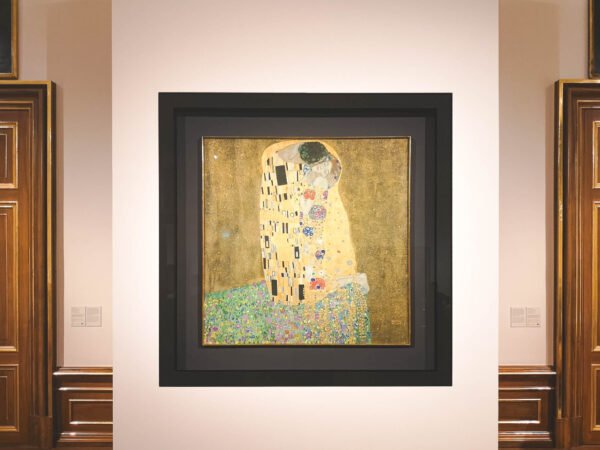
Gustav Klimt, The Kiss, 1908. Photo by Alis Monte [CC BY-SA 4.0], via Connecting the Dots
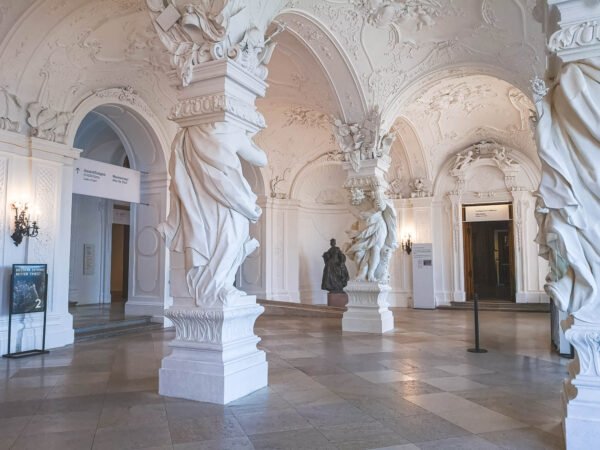
Sala Terrena. Photo by Alis Monte [CC BY-SA 4.0], via Connecting the Dots
Why Visit?
The Upper Belvedere delivers what most museums only promise: the actual masterpiece you came to see, in a setting designed to match its ambition. Klimt’s “The Kiss” hangs in a purpose-built gallery on the first floor; on weekdays before 11:00 or after 16:00, you can stand alone with it—no crowd, no ropes, just gold leaf and intimacy. The Schiele rooms upstairs (raw, claustrophobic, unsettling) provide the necessary counterpoint: where Klimt gilded anxiety, Schiele stripped it bare.
The palace architecture rewards attention beyond the galleries. Hildebrandt designed every sightline: the approach through tiered gardens frames the facade; the Sala Terrena compresses space before releasing it upward through the Grand Staircase; the Marble Hall’s windows align with the Lower Belvedere, a kilometer downhill. This isn’t a converted residence—it’s a Gesamtkunstwerk, a total artwork where building, garden, and collection form a unified Baroque argument about power, beauty, and display.
Locals treat it differently from tourists. Morning runners use the gardens; university students sketch in the permanent collection on slow Tuesdays; the museum café terrace offers one of Vienna’s best panoramas over coffee and Sachertorte. Budget 90 minutes minimum for highlights (Klimt, Schiele, Marble Hall), three hours to work through the full collection chronologically. Combine with the Lower Belvedere (20-minute walk through the gardens) for a full morning; or pair it with nearby Schwarzenbergplatz and the Soviet War Memorial for a deeper read of Vienna’s layered 20th century.
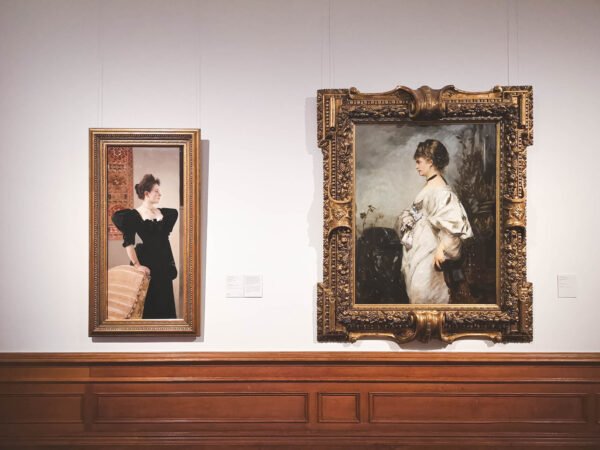
Gustav Klimt, Frauenbildnis, 1893/1894 (left) and Hans Makart, Magdalena Plach, 1870 (right). Photo by Alis Monte [CC BY-SA 4.0], via Connecting the Dots
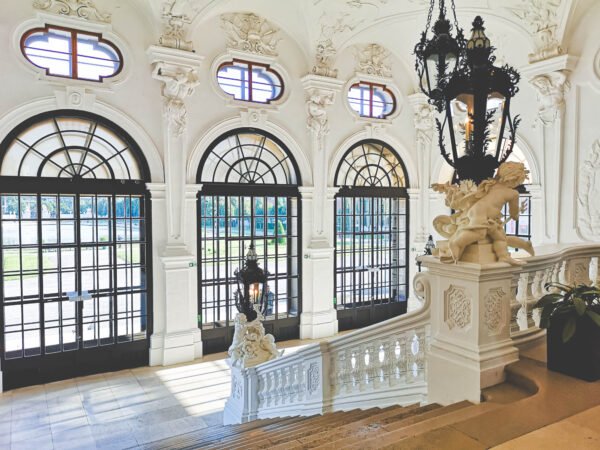
The Grand Staircase. Photo by Alis Monte [CC BY-SA 4.0], via Connecting the Dots
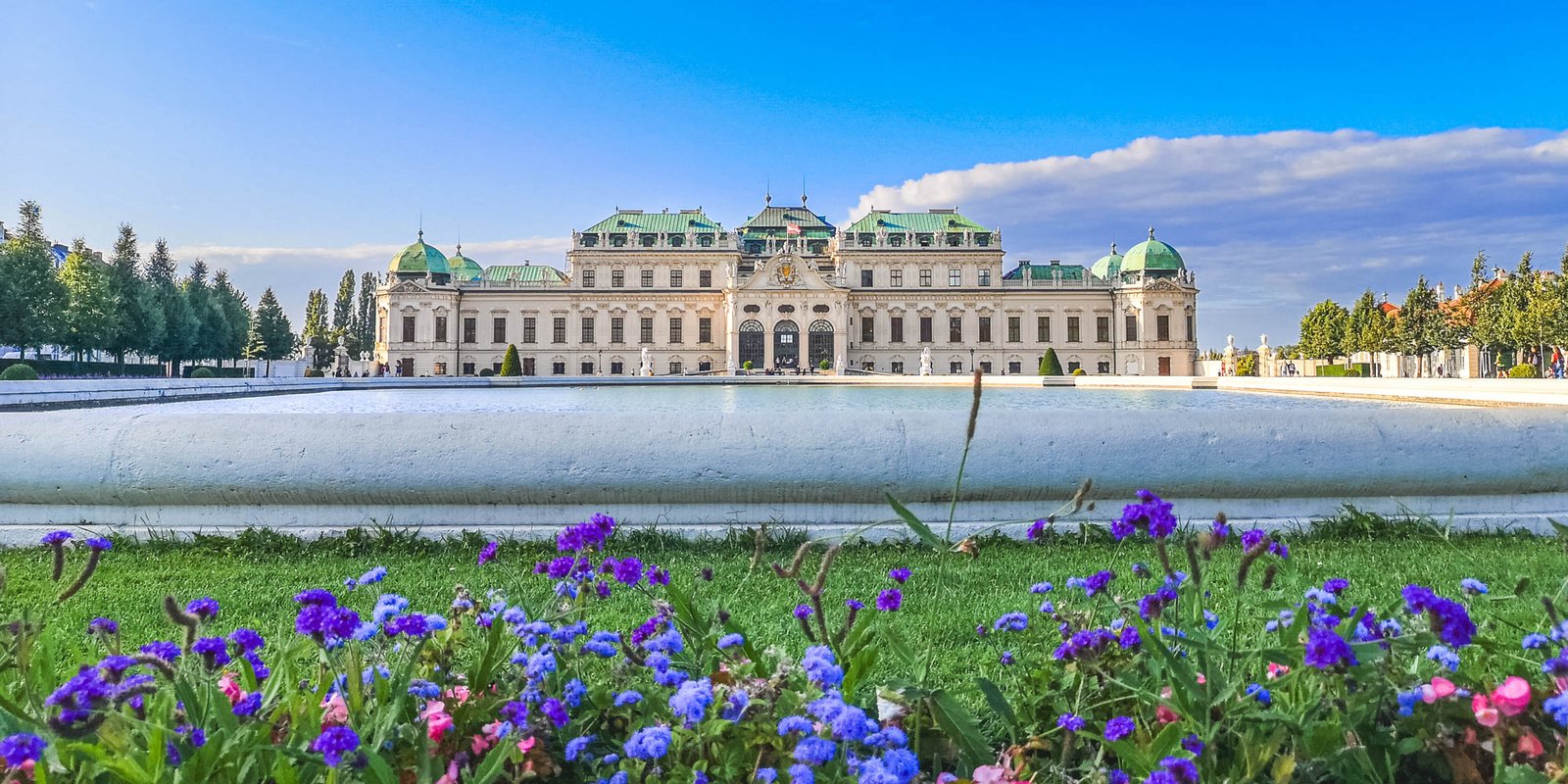
All content and photos by Alis Monte, unless stated differently. If you want to collaborate, contact me on info@ctdots.eu Photo by Alis Monte [CC BY-SA 4.0], via Connecting the Dots
Ticket Discounts
Visit the Upper Belvedere for less with Vienna’s top city passes. The Vienna Pass gives free access to both Upper and Lower Belvedere and 70+ attractions citywide, plus skip-the-line entry. For flexible transport and discounted tickets to major sights, get the Vienna City Card (24h–72h) with unlimited public transport and museum savings. Both passes include free cancellation up to 24h before activation.
Frequently Asked Questions
Where is the Upper Belvedere?
In Vienna's 3rd district (Landstraße), at Prinz Eugen-Straße 27, on a hillside overlooking the city center.
When was it built?
Between 1717 and 1723 by architect Johann Lukas von Hildebrandt for Prince Eugene of Savoy.
What are the opening hours?
Daily 9:00–18:00. Peak crowds 11:00–14:00; quieter before 10:00 or after 16:00.
What should I not miss?
Klimt's "The Kiss" and "Judith I," Schiele galleries, the Marble Hall, and the view from the terrace overlooking the gardens.
Is it accessible?
Yes—step-free lift access to all floors, accessible restrooms, wheelchairs available at entrance.
How long do I need?
Allow 90 minutes for highlights (Klimt, Schiele, Marble Hall); 2.5–3 hours for the full permanent collection.
Which public transport is best?
Tram D to "Schloss Belvedere" (closest to the Upper Belvedere). Or take S-Bahn / Tram 18 or O to "Quartier Belvedere" and walk ~5–7 minutes uphill; U1 to "Südtiroler Platz / Hauptbahnhof" is ~15 minutes on foot.
Can I buy tickets online?
Yes—strongly recommended to skip ticket-counter queues, especially during midday (11:00–14:00) and weekends. You can buy it on official website or here: https://www.getyourguide.com/vienna-l7/vienna-art-and-architecture-in-the-belvedere-t47912/?partner_id=CPLDG7A&utm_medium=online_publisher&mkt_cmp=true&cmp=f-upper-belvedere